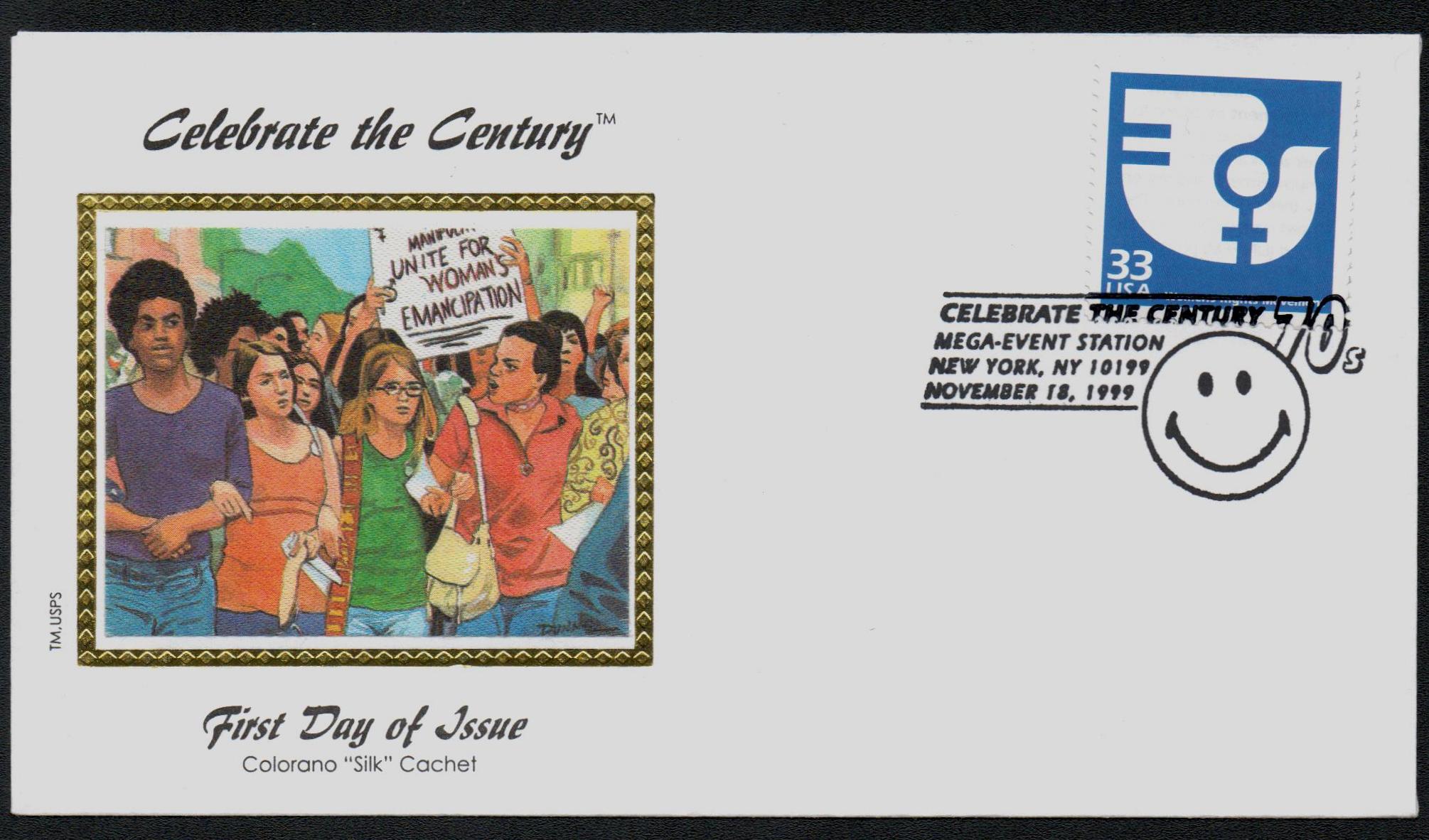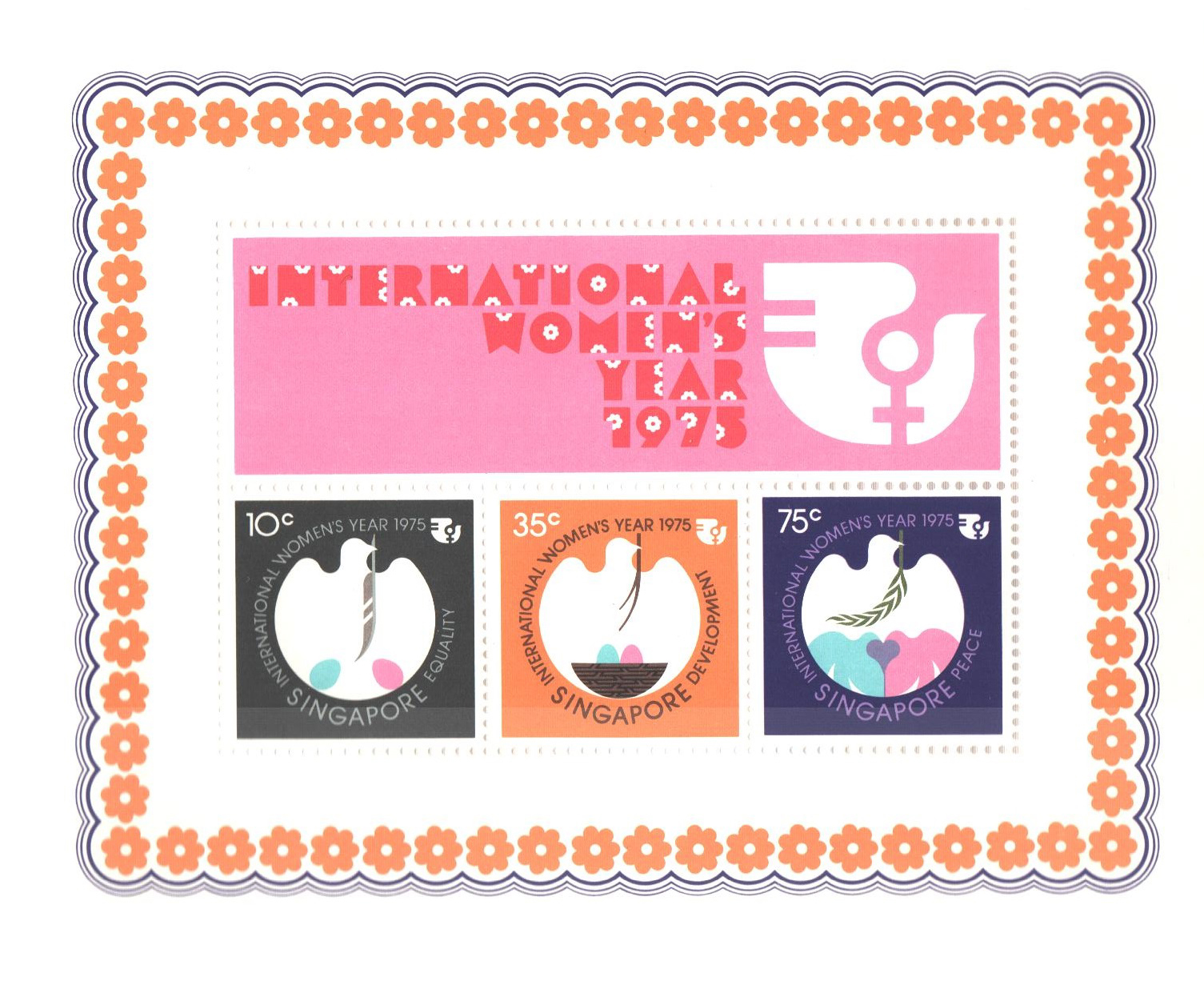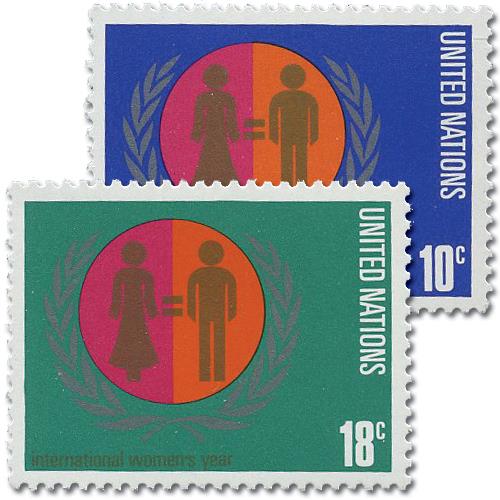
# 3189j FDC - 1999 33c Celebrate the Century - 1970s: Women's Rights Movement
1999 33¢ Women’s Rights Movement
Printed By: Ashton-Potter
Printing Method: Offset Press
Happy International Women’s Day
One of the first known celebrations of a National Women’s Day was held on February 28, 1909, in New York. The event was organized by the Socialist Party of America at the request of suffragist Theresa Malkiel.
The following year, an International Women’s Conference met in Denmark. At that meeting, several members were inspired by the Women’s Day in America and suggested an international celebration be held, though they didn’t initially set a date. They saw the celebration as a way to promote equal rights and suffrage for women. Then on March 19, 1911, they held their first International Women’s Day. It included more than one million people in hundreds of demonstrations in Austria, Denmark, Germany, and Switzerland.

Similar events were held in the US and abroad in the coming years, but the first International Women’s Day to be celebrated on March 8 came in 1914. Three years later, during the Women’s Day demonstration in Russia, female textile workers went on strike, sparking the Russian Revolution. According to Leon Trotsky, “we did not imagine that this ‘Women’s Day’ would inaugurate the revolution. Revolutionary actions were foreseen but without a date. But in the morning, despite the orders to the contrary, textile workers left their work in several factories and sent delegates to ask for support of the strike… which led to mass strike… all went out into the streets.” A week later, Nicholas II, Russia’s Emperor, abdicated and the provisional government gave women the right to vote.

In the years that followed, Russia made Women’s Day an official holiday, though it was still a working day. Then in 1965, they made it a non-working holiday, “in commemoration of the outstanding merits of Soviet women in communistic construction, in the defense of their Fatherland during the Great Patriotic War, in their heroism and selflessness at the front and in the rear, and also marking the great contribution of women to strengthening friendship between peoples, and the struggle for peace.”

Several other nations would celebrate Women’s Day in the coming years. Then in 1975, the United Nations began celebrating International Women’s Day during the International Women’s Year. Two years later, the United Nations suggested its members proclaim March 8 as the UN Day for women’s rights and world peace. Today, countries around the world celebrate International Women’s Day every March 8.
1999 33¢ Women’s Rights Movement
Printed By: Ashton-Potter
Printing Method: Offset Press
Happy International Women’s Day
One of the first known celebrations of a National Women’s Day was held on February 28, 1909, in New York. The event was organized by the Socialist Party of America at the request of suffragist Theresa Malkiel.
The following year, an International Women’s Conference met in Denmark. At that meeting, several members were inspired by the Women’s Day in America and suggested an international celebration be held, though they didn’t initially set a date. They saw the celebration as a way to promote equal rights and suffrage for women. Then on March 19, 1911, they held their first International Women’s Day. It included more than one million people in hundreds of demonstrations in Austria, Denmark, Germany, and Switzerland.

Similar events were held in the US and abroad in the coming years, but the first International Women’s Day to be celebrated on March 8 came in 1914. Three years later, during the Women’s Day demonstration in Russia, female textile workers went on strike, sparking the Russian Revolution. According to Leon Trotsky, “we did not imagine that this ‘Women’s Day’ would inaugurate the revolution. Revolutionary actions were foreseen but without a date. But in the morning, despite the orders to the contrary, textile workers left their work in several factories and sent delegates to ask for support of the strike… which led to mass strike… all went out into the streets.” A week later, Nicholas II, Russia’s Emperor, abdicated and the provisional government gave women the right to vote.

In the years that followed, Russia made Women’s Day an official holiday, though it was still a working day. Then in 1965, they made it a non-working holiday, “in commemoration of the outstanding merits of Soviet women in communistic construction, in the defense of their Fatherland during the Great Patriotic War, in their heroism and selflessness at the front and in the rear, and also marking the great contribution of women to strengthening friendship between peoples, and the struggle for peace.”

Several other nations would celebrate Women’s Day in the coming years. Then in 1975, the United Nations began celebrating International Women’s Day during the International Women’s Year. Two years later, the United Nations suggested its members proclaim March 8 as the UN Day for women’s rights and world peace. Today, countries around the world celebrate International Women’s Day every March 8.















